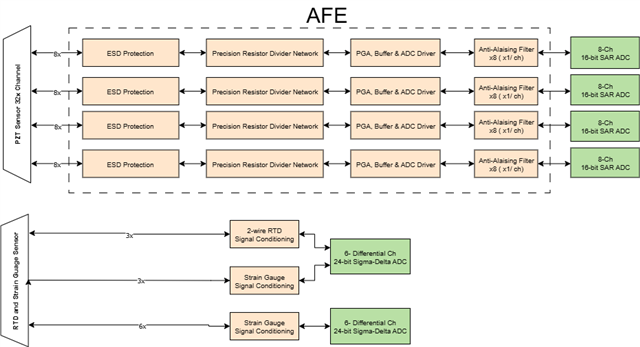Other Parts Discussed in Thread: ADS8598S,
Tool/software:
Hi Team,
We are designing a data acquisition system that shall comply with the DO-160 military standard. In our system, we will be reading the data from the following sensors:
- 32x channel PZT sensor
- 3x channel RTD sensor
- 9x channel Strain gauge sensor
From a protection point of view, we are looking to add isolation in our system. While exploring the concept of isolation, we came across two types of isolation: digital isolation and analog isolation. As per our understanding, we will require analog isolation between the sensor and the ADC. Could you please help out select the best isolator that meets our isolation as well as our channel needs?
We are planning to use ADS8598S ADC for the PZT sensor and ADS1261 for the RTD & Strain gauge sensor. Attached is the block diagram of the sensor and ADC interfacing (without isolator).
Please let me know if you require any further information to assist us.

Thanks & Regards,
Sahil Nayak

